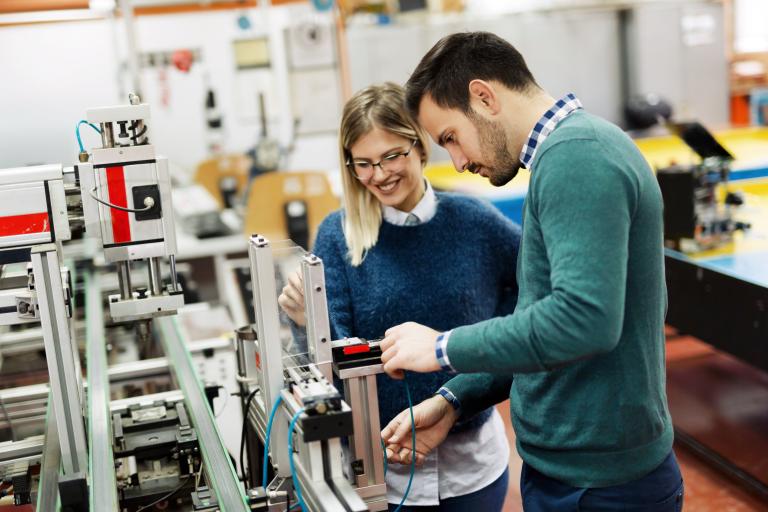
Upgrading to the latest industry trends doesn’t just happen in the field. It also happens in the new Patti Engineering-designed classroom lab at Kettering University.
Kettering University places a great emphasis on delivering superior education to its students. The institution recently saw a need for a new student education lab incorporating cutting-edge Industry 4.0 technology that enables cross-curricular learning.
“Patti Engineering has been a longtime supporter of Kettering University and has generously helped us design this new lab and develop related coursework,” said Scott Grasman, Dean of the College of Engineering. “We are thrilled to incorporate real-world applications into a single robotic cell for our students to learn industrial robotics, control systems, the Internet of Things, wireless communications and data analytics. Together with our industrial manufacturing, electrical and computer engineering students, computer science students will work side by side on the different learning opportunities presented by the robotic cell. We will even integrate our 3D printing course into developing the end-of-arm actuators for the collaborative robot. It’s a comprehensive system designed to be utilized by all of our engineering and computer science programs.”
The Industry 4.0-enabled collaborative robotic cell will feature hardware from some of the University’s corporate sponsors, including Mitsubishi and BorgWarner. Patti Engineering helped with the design before funding and is working on the project so it can be completed over the summer.
“We are excited for the opportunity to develop a new lab for the students at Kettering,” said Sam Hoff, President and Founder of Patti Engineering. “The lab’s real-world challenges of collaboration across all disciplines will provide an excellent space for students to put their classroom knowledge into practice, preparing them for the obstacles they may face in their careers. By solving these challenges while still in school, students will be better equipped to navigate and solve problems in their future endeavors.”
Hoff earned a Bachelor’s degree in Electrical Engineering from Kettering University in 1990.
Patti Engineering is also responsible for programming the new lab with a baseline demo program. The collaborative robot will use a vision system to pick and place a variety of objects that are housed within the cell and will be able to perform simple tasks for demo purposes. The real goal is to allow students to work with the equipment and program and make improvements from their ideas. After the term ends, the original Patti Engineering code will be re-downloaded with the push of a button to allow the same learning opportunities for students in the next term. This thoughtful approach ensures that every student utilizing the cell can delve deeply into the material and achieve its full potential.
The concept for the Industry 4.0 lab has been several years in the making.
“We are seeing it from our students as they rotate through co-ops,” Grasman said. “While visiting a student during his co-op term recently, I was pleased to see several of our students working together. One was working on the robotics; another on the vision system; a third for the OEM; and a fourth for the end customer. Each has a co-op with a different company and majors in a different discipline, but they all work on the same cell. This really reinforces the idea that we are trying to replicate in this new lab as many of our students will collaborate with different departments on a regular basis after they graduate.”
Currently, the University has separate labs to correspond with the different courses. The new lab will be integrated into existing courses and will be available for future courses. Kettering University faculty members are working on creating additional curricula, including capstone experiences, centered around the new facility. The new lab is scheduled to open this summer.